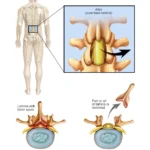Laminectomy Spinal Decompression in Hyderabad

Laminectomy Spinal Decompression
At TX Hospitals, we specialize in performing laminectomy spinal decompression surgeries to alleviate discomfort and improve your quality of life. Let’s explore what laminectomy spinal decompression entails and how it can benefit you

What is Laminectomy Spinal Decompression?
Laminectomy spinal decompression is a surgical procedure that involves removing a portion of the vertebral bone called the lamina. The purpose of this procedure is to create more space within the spinal canal, relieving pressure on the spinal cord and nerves. By removing the lamina, the surgeon can access the affected area and address conditions such as spinal stenosis, herniated discs, or bone spurs.
Why is Laminectomy Spinal Decompression Performed?
Laminectomy spinal decompression is performed to alleviate symptoms and improve functionality in patients experiencing the following conditions:
- Spinal Stenosis: Laminectomy can relieve the narrowing of the spinal canal, reducing pressure on the spinal cord and nerves.
- Herniated Disc: Removing a portion of the lamina can provide access to the affected disc, allowing the surgeon to repair or remove the herniated portion.
- Bone Spurs: Laminectomy eliminates bone spurs that may be impinging on spinal structures and causing pain or nerve compression.
- Degenerative Disc Disease: Laminectomy can address degenerated discs that contribute to pain and limited mobility.
How to Prepare for Laminectomy Spinal Decompression
Preparing for laminectomy spinal decompression surgery involves the following steps:
- Consultation: Meet with our experienced spine surgeon who will evaluate your condition, discuss treatment options, and address any concerns or questions you may have.
- Preoperative Assessment: Undergo comprehensive medical tests, including imaging scans and blood work, to assess your overall health and ensure you are a suitable candidate for surgery.
- Medication Review: Provide a detailed list of medications you currently take, including prescription drugs, over-the-counter medications, and supplements. Your surgeon will advise you on any necessary adjustments.
- Preoperative Instructions: Follow the specific guidelines provided by your surgeon, which may include fasting requirements, cessation of certain medications, and arrangements for transportation and postoperative care.
More about Laminectomy Spinal Decompression
Laminectomy spinal decompression is typically performed under general anesthesia. During the procedure, a small incision is made in the back, and the lamina is carefully removed. Any additional procedures, such as facetectomy or foraminotomy, may be performed if needed. The surgical site is then closed, and you will be monitored in a recovery area before being transferred to a hospital room or discharged home, depending on your case.
At TX Hospitals, we prioritize personalized care and optimal outcomes. Our experienced team of spine specialists and dedicated staff are committed to providing you with the highest standard of care throughout your laminectomy spinal decompression journey.
Frequently Asked Questions (FAQs)
Laminectomy spinal decompression is a surgical procedure that involves removing a portion of the vertebral bone called the lamina. It is performed to create more space within the spinal canal, relieving pressure on the spinal cord and nerves.
Laminectomy spinal decompression may be recommended for individuals experiencing conditions such as spinal stenosis, herniated discs, bone spurs, or degenerative disc disease. It is often considered when non-surgical treatments have not provided sufficient relief.
The duration of a laminectomy spinal decompression procedure can vary depending on the specific case and the extent of the surgery. On average, the surgery can take anywhere from 1 to 3 hours.
Recovery time can vary based on several factors, including the individual’s overall health and the extent of the surgery. In general, patients may need to stay in the hospital for a few days after the procedure. The full recovery period can range from a few weeks to several months, during which physical therapy and follow-up appointments with the surgeon are often recommended.
As with any surgical procedure, there are potential risks and complications involved in laminectomy spinal decompression. These can include infection, bleeding, nerve damage, spinal fluid leak, and adverse reactions to anesthesia. It’s essential to discuss these risks with your surgeon before deciding to undergo the procedure.







